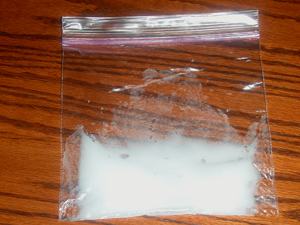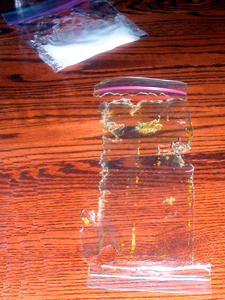 First of all, I want to tell you that the State Bee Inspector came by the historic mill on Tuesday, and he gave us the all-clear on American Foul Brood. In other words, we don't have it, or at least don't have it yet. He pointed out the big mite infestation in my hive there, though, and made various suggestions, including the use of Food Grade Mineral Oil (FGMO) to make those mites go slip-sliding away. I'll probably give it a whirl (there's no harm in it) but I have already completed two oxalic acid fumigations, and will make the third one on Monday. I think I am going to study up on how to double up on mite treatments, without unintentionally poisoning the girls with too much of a good thing.
First of all, I want to tell you that the State Bee Inspector came by the historic mill on Tuesday, and he gave us the all-clear on American Foul Brood. In other words, we don't have it, or at least don't have it yet. He pointed out the big mite infestation in my hive there, though, and made various suggestions, including the use of Food Grade Mineral Oil (FGMO) to make those mites go slip-sliding away. I'll probably give it a whirl (there's no harm in it) but I have already completed two oxalic acid fumigations, and will make the third one on Monday. I think I am going to study up on how to double up on mite treatments, without unintentionally poisoning the girls with too much of a good thing.So Sucrocide failed at the Mill. What did I do elsewhere? Well, two weeks ago, I placed "ApiGuard" on the rooftop hives, and followed up a few days later by placing it on the monastery girls (Saturday). ApiGuard is a 50 gram dose of concentrated Thymol, the same stuff that makes your Listerine potent. The idea is that you place the paste on the top bars of your hives, allow space for the bees to be able to move over it, and let their hygienic instincts ("Get this the heck out of there!") stimulate them to grab it, and move it among themselves to remove it from their home. In doing so, they expose the mites among them to a fatal dose (or so we hope). You put it on, wait two weeks, then put it on again.
The picture here is a ziplock bag filled with the paste. My friend (and mentor) Larry bought the bulk bucket, and he carefully measured out the correct doses for 4 of my hives, eight baggies in all. He instructed me in how I should put on gloves, carefully push the paste away from sides with the bag closed, cut off the edges, and then open the bag on top of the hive.
 This picture shows such a bag two weeks later, The girls have cleaned it off, and actually started chewing the bag. The yellow stuff is propolis (no Carniolan party is ever complete without propolis). As of today, they got a chance to start over on a second and final dose.
This picture shows such a bag two weeks later, The girls have cleaned it off, and actually started chewing the bag. The yellow stuff is propolis (no Carniolan party is ever complete without propolis). As of today, they got a chance to start over on a second and final dose. According to the studies, this treatment is anything from 75% to 85% effective against Varroa mites, and does a number on the tracheal mites, too. I placed menthol on these hives at the same time as the ApiGuard, so the tracheal mites should have really taken a pounding at this point. After the Sucrocide experience, however, I absolutely intend to continue taking mite counts and to follow up with addition (maybe FGMO) treatments. I think oxalic acid is probably in the cards for January.
The whole experience at the Mill has made me more conscious of the importance of record keeping, and managing the tools, etc., from each apiary separately. If we had received a positive diagnosis at the Mill, all of my hives could be potentially infected. As it is, I plan on fumigating gear, washing bunches of tools and veils in bleach, keeping better records, and watching myself in future. Oh, and there may be more boring posts like this, and I apologize in advance.
3 comments:
Long, but not boring :)
Greetings,
When PMS symptoms first appear, it's very easy to over-react. And when treating, it easy to get over anxious concerning the results. It took the bees most of a season to get into the predicament they're in. Seeing the results from treating will take some time as well.
Don't expect a quick fix in a short time. Multiple treatments won't accelerate the process either. Be patient. It will take at least a brood cycle to see any meaningful results.
Regards
BWrangler
A word-of-mouth remedy for mite infestations in reptiles is to soak the reptile in a mixture of water and generic imitation-Listerine. Apparently real Listerine has something in it that damages reptiles, but faux-Listerine does not. I used this method many years ago to rid my snake of white mites (thank goodness, she hasn't had mites since then) and passed it on to friends who have used it with success. I wonder if it's the Thymol that does them in?
Post a Comment